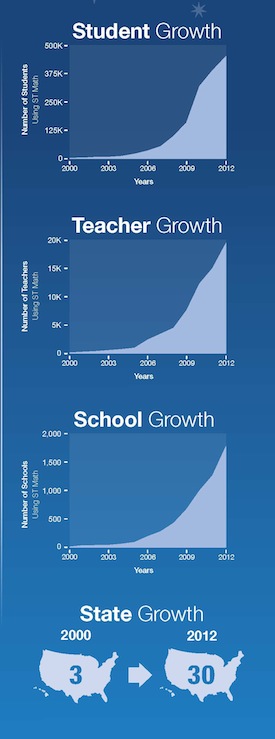This week, Cisco will receive the National Partner in Innovation Award from MIND Research Institute, based in Southern California.
We are honored, but that’s not what is most important.
While many such awards are given annually by nonprofits to recognize their donors, this award actually acknowledges a decade-long partnership between Cisco and MIND to improve student math achievement.
Such a long-term funding relationship is rare; most giving spans at best three to five years. But MIND is rare, too. We have been supporting the organization this long because they have developed one of the best and most effective approaches to helping students learn math that we’ve ever seen, with rigorous and significant student outcome data to prove it.
Our introduction to MIND’s work was at one of their annual meetings, back when they were still serving a relatively small set of schools in their local region. Flying into Orange County, California, I recall remarking to a colleague that there had already been many unsuccessful attempts to technology-enable math learning, and I did not expect to see anything new at the conference.
I was never so happy to be proven wrong.
We left that conference agreeing that MIND’s solution, Spatial-Temporal (ST) Math, was so impressively different, such a complete departure and innovation from all previous work we’d seen in the field, that we wanted it to become available to every child on the planet.

Take a moment to play a demo of one of their math games about fractions and you will see how the concept works. It removes language-based barriers to learning, making math principles easy to apprehend.
Since 2004, Cisco and the Cisco Foundation have invested more than $3 million in cash grants and technology to help MIND move from an inherently limited client-server architecture to a fully cloud-based solution, increasing program quality, decreasing their costs, and allowing them to rapidly scale. We also supported the development of content for new grade levels, the mapping of that content to state standards, and an online teacher-development portal that allows teachers to see where students are getting stuck and how to help.
 As I wrote recently, MIND’s non-language-based, visual ST Math program helps students learn math because it helps them gain a sense of mastery over subject matter in small bites, which leaves them hungry to learn more. The joy of learning and sense of pride in accomplishment is palpable in the classrooms where students are engaged with ST Math.
As I wrote recently, MIND’s non-language-based, visual ST Math program helps students learn math because it helps them gain a sense of mastery over subject matter in small bites, which leaves them hungry to learn more. The joy of learning and sense of pride in accomplishment is palpable in the classrooms where students are engaged with ST Math.
Student performance gains are consistent regardless of language or culture of origin, gender, and in some cases even learning disability. Children are able to understand where they are in terms of their current abilities, and know what they do to learn what is next, focusing on personal challenges and achievements. ST Math is also proving out how such incremental progress and success helps learning “stick” with children longer than some single intervention which may fade quickly over time.
MIND gathers every mouse-click of every student, and analyzes the data in order to constantly improve the effectiveness of the math exercises they provide. Like the incremental gains shown by students, this thorough, incremental improvement approach to software development pays great dividends, as shown by the outstanding double and triple growth in math scores year over year that we are seeing in the pilots we have funded in Arizona, California, and Virginia.
While we are pleased to accept this award, we are more pleased to see that MIND itself is gaining recognition, with recent awards from both the Business Roundtable and Change the Equation.
We are excited to continue to partner with MIND Research Institute so they may continue to improve and expand their program offerings, and to help spread the word about this cost-effective, and truly innovative approach to math learning.


We at MIND Research Institute are honored to recognize Cisco, one of our true partners in innovation. Their support has been instrumental in moving forward, at a rapid scale, our efforts to ensure that all students are mathematically equipped to solve the world’s most challenging problems.